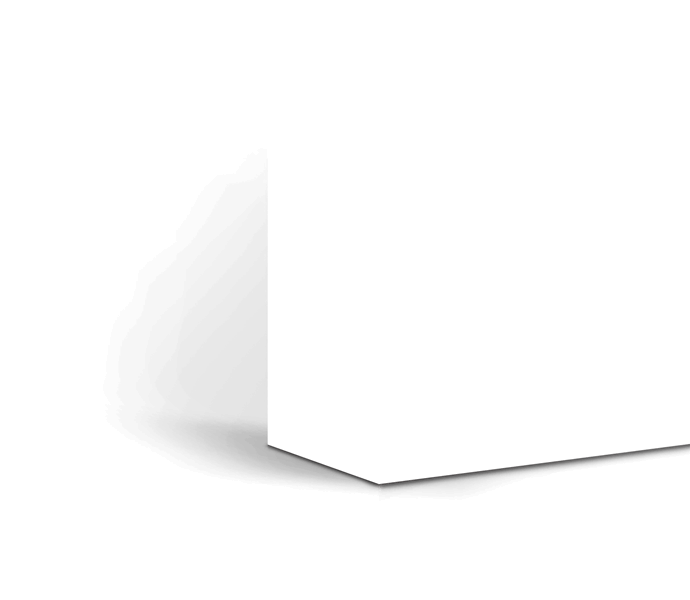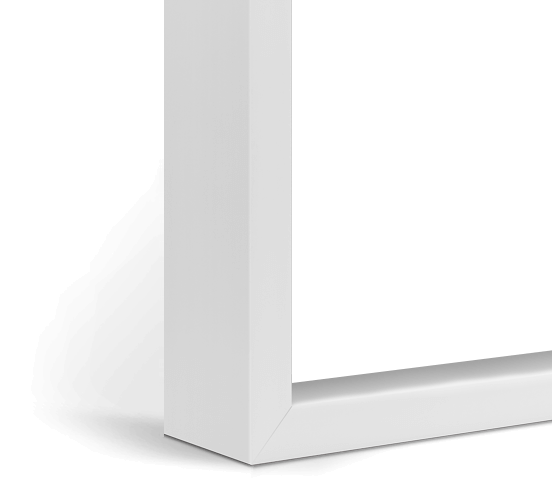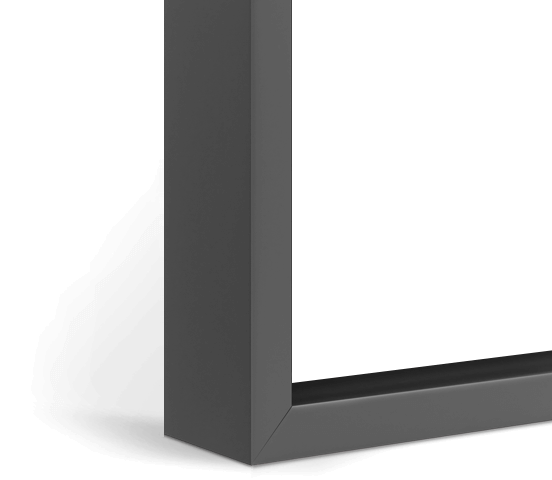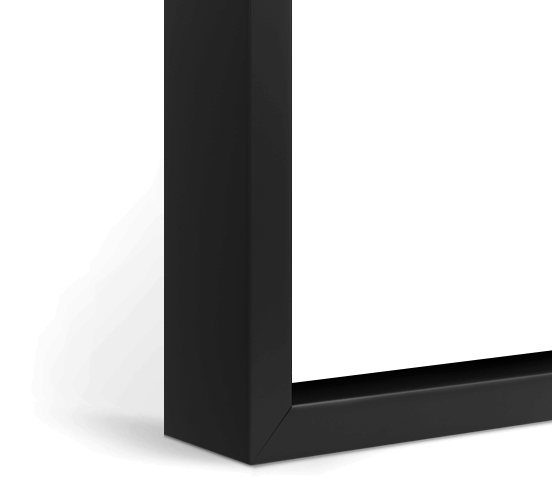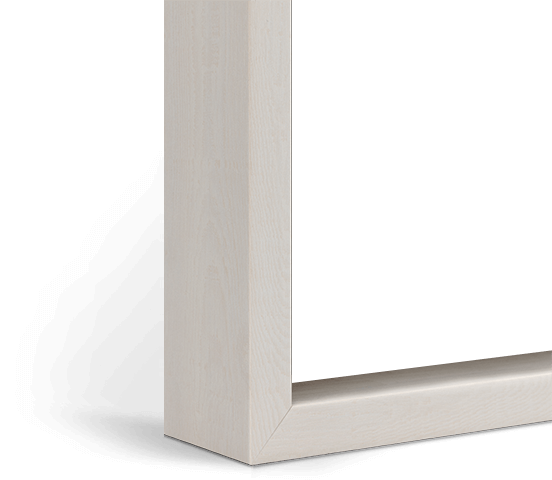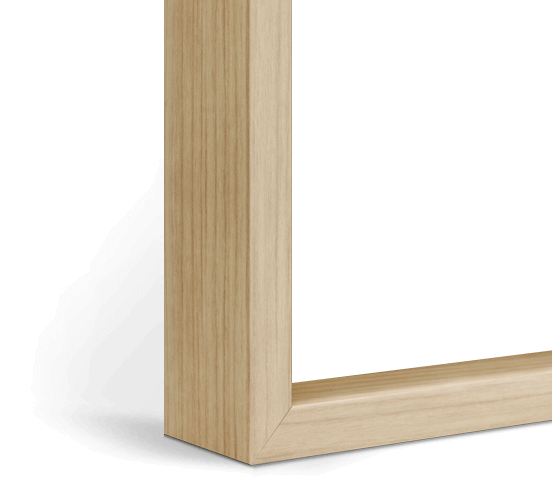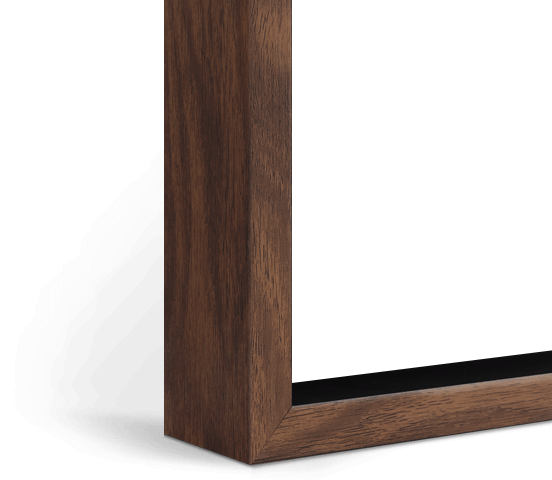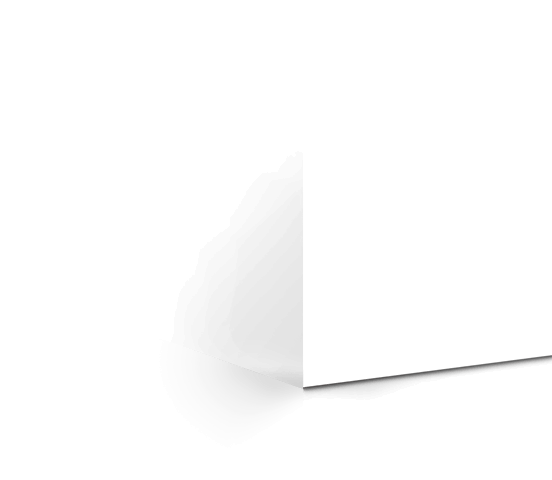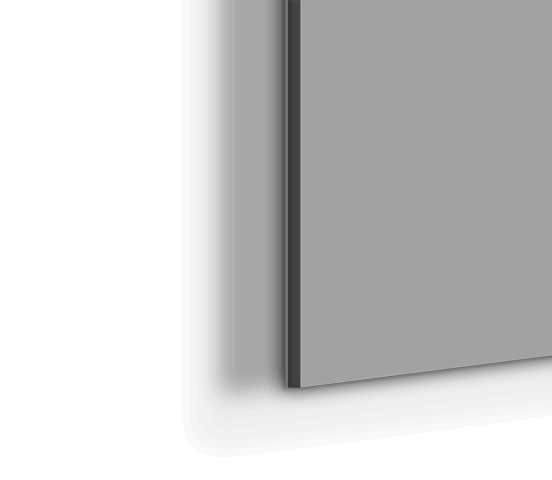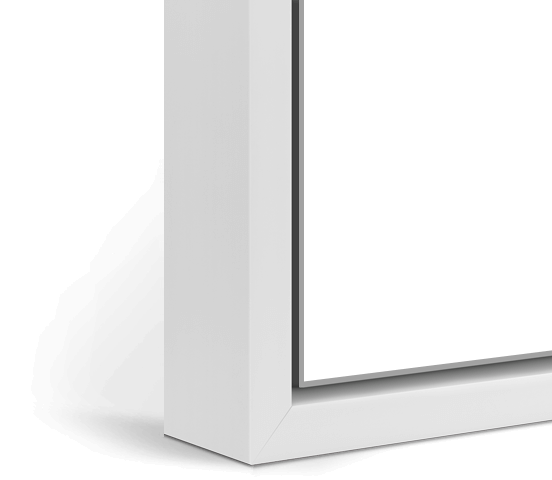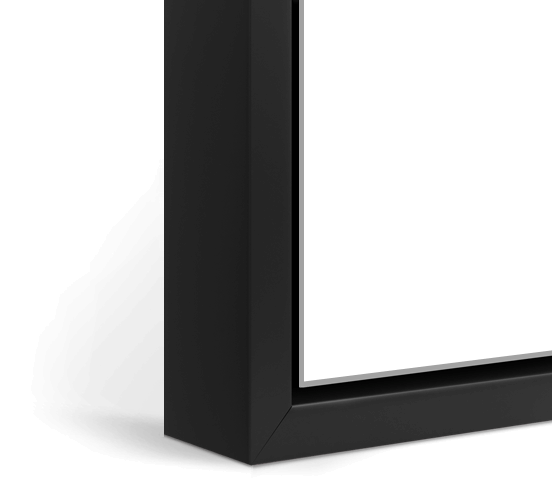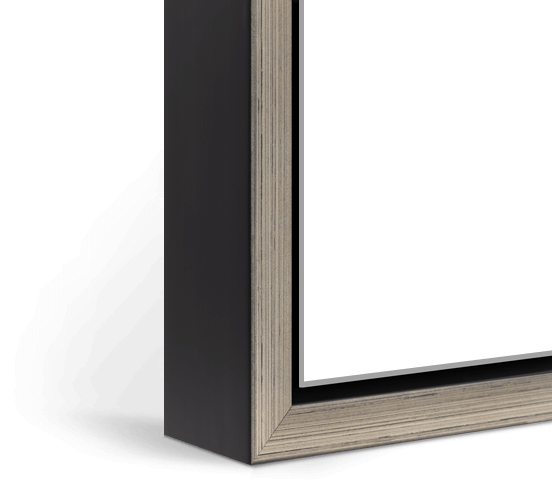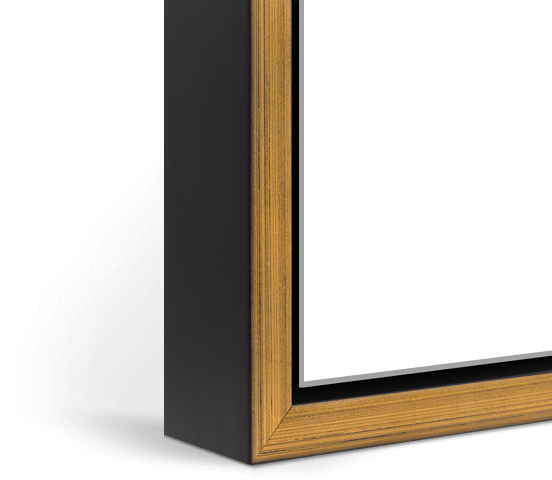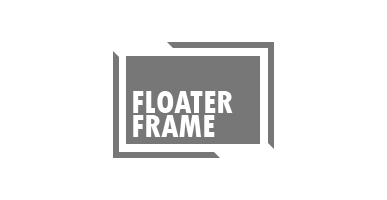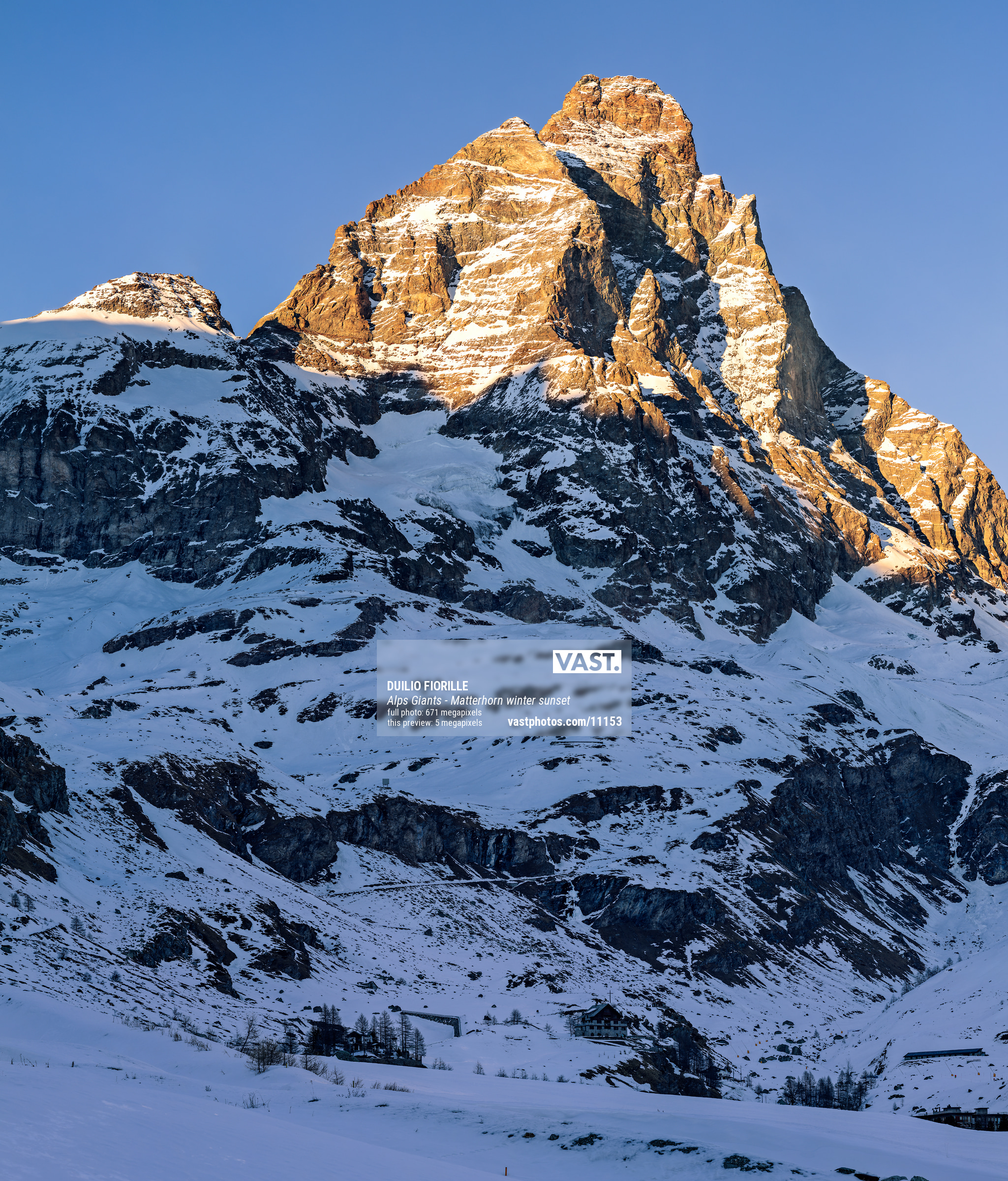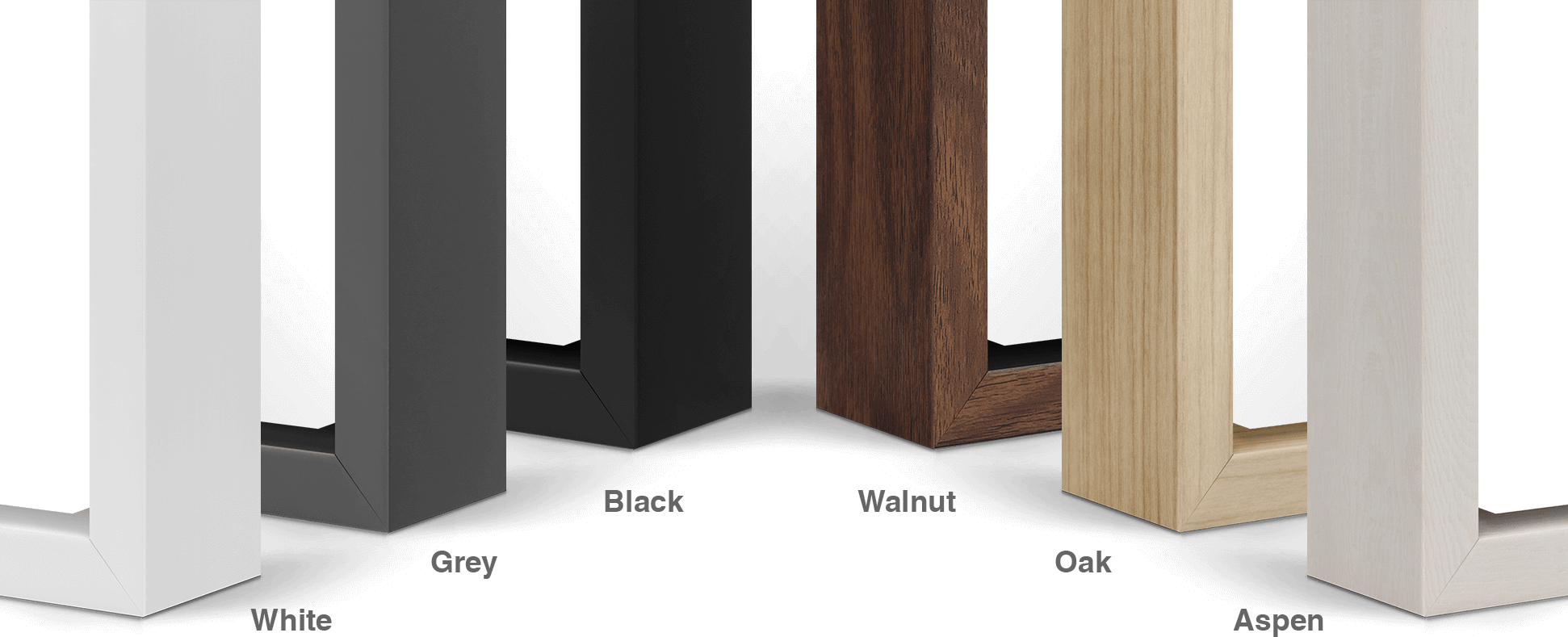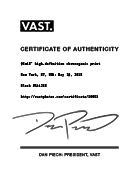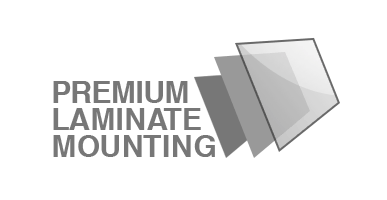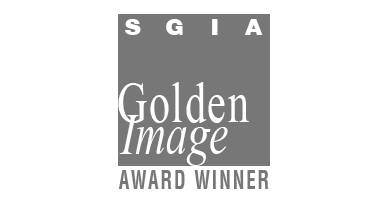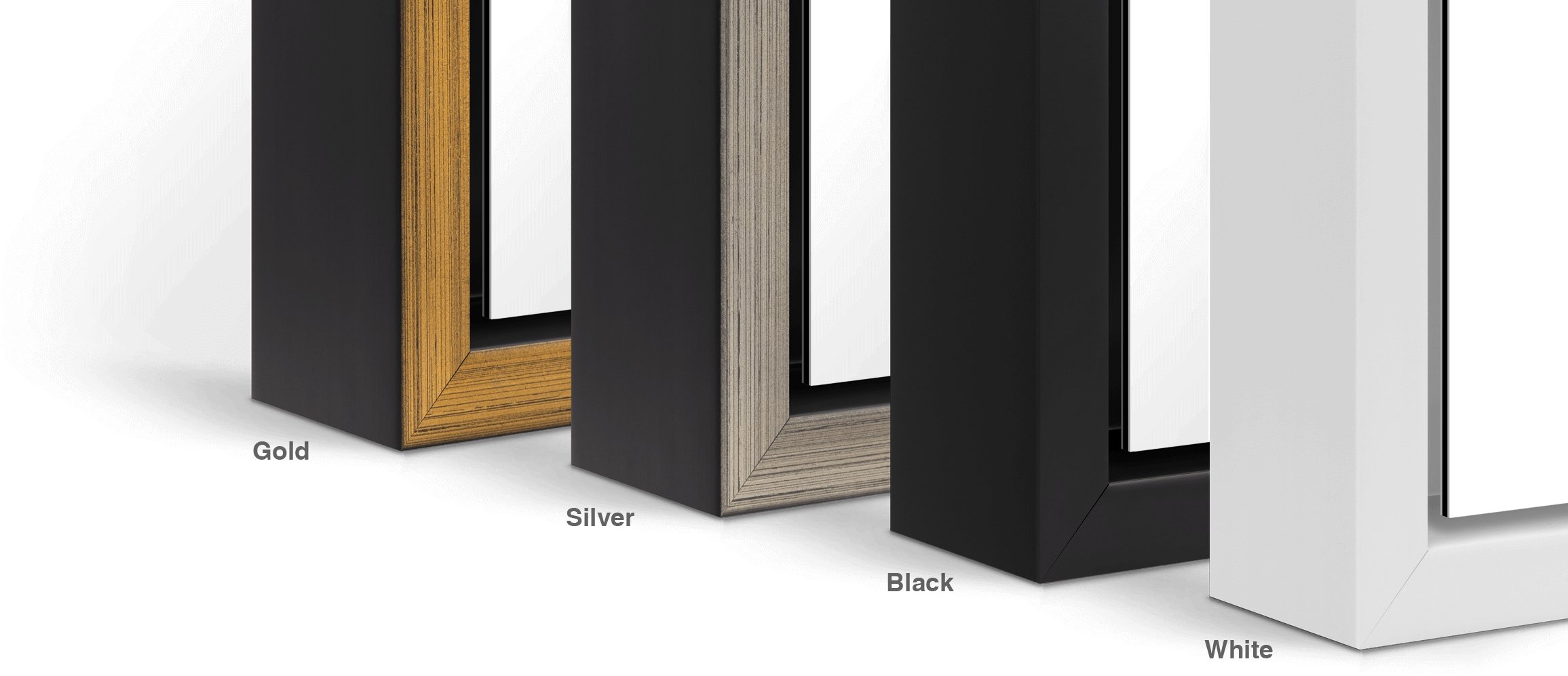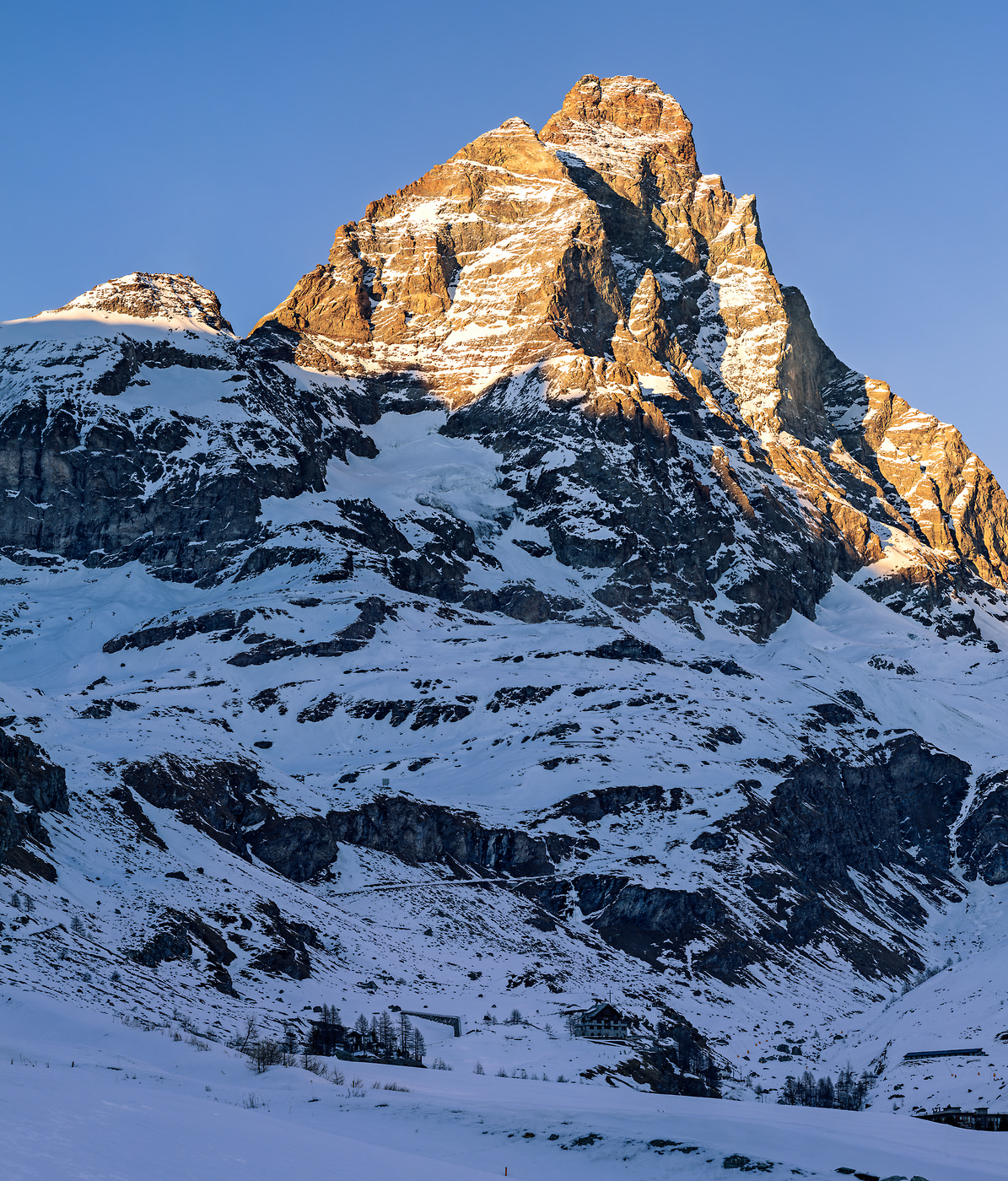
This photo is 3,100% higher resolution than a typical photo.
Scroll to learn more.
This
671 MEGAPIXEL
VAST photo is
PERFECTLY SHARP
even at very large print sizes.
FREE SHIPPING FOR LIMITED TIME

This photo is 3,100% higher resolution than a typical photo.
Scroll to learn more.
This photo is
3,100% higher resolution
than a typical photo.
Scroll to learn more.
671 MEGAPIXEL VAST PHOTO
Breuil Cervinia, Valtournenche, Valle d'Aosta, Italy
For some time now I have been planning to create a VASTPHOTO of the Matterhorn massif, one of the most famous mountains of the Alps ever. I made attempts in the summer, but the constant presence of very thick clouds always prevented their sight.
Taking advantage of a long period of drought that has lasted for months with always clear skies, in January 2022 I went to the city of Cervinia and I was able to take very high resolution photos of the mountain and capture details never seen before in a photograph.
The weather conditions were perfect for taking photos in very high resolution: wind, dry air and very accentuated visibility, soft winter light. The sky was absolutely clear of clouds throughout the day: perhaps not interesting, but this allowed to collect all the possible details with great detail in every part of the image.
If you explore the photo you will see a great deal of detail, both of the mountain with its variegated rocks of different colors, and of the surrounding structures of the various facilities of the City of Cervinia, including several skiers while carrying out sports activities.
I now report some data from the mountains and the surrounding area.
The Matterhorn (Cervin in French; Matterhorn in German) is a mountain of the Alps 4478 meters high, seventh peak and third Italian mountain by altitude, located in the Western Alps (Pennine Alps - Weisshorn and Matterhorn Alps - Chain Bouquetins-Matterhorn chain), along the border between Italy and Switzerland (west of the Monte Rosa massif, east of the Grand Combin and south-west of the Mischabel Massif).
With a prominence of 1031 meters (it is necessary to descend to Col Durand (3451 meters) to climb to higher peaks) and an isolation of 13.7 kilometers (the highest mountain of it closest is the Western Lyskamm (4481 meters), in the Monte Rosa massif), it stands isolated from the rest of the other surrounding peaks and overlooks the villages of Breuil-Cervinia in the south in Italy and Zermatt in the north in Switzerland, well-known summer and winter tourist resorts.
Characterized by the particular very pronounced pyramidal shape, it has significantly marked the history of mountaineering: its north face is in fact one of the classic north walls of the Alps and around it develops the Ski area of the Matterhorn Ski Paradise with the possibility of summer skiing on the glacier of the Plateau Rosa.
The lower part of the Matterhorn consists of gabbro, while the central part consists mainly of ortogneiss, a high-grade metamorphic rock formed due to the collision between plates from Europe and Africa. This collision, which probably occurred around a hundred million years ago, raised the mountain range of the Alps, forming numerous peaks.
The particular shape of the Matterhorn was subsequently caused by erosion: four glacial cirques were formed leaving a pyramidal peak in the center. Other examples of this geological evolution are the Ama Dablam, in the Himalayas, or the Cimon della Pala, in the Dolomites. The ridge is formed by crystalline shales.
Due to its location on the main Alpine watershed and its considerable height, the Matterhorn is exposed to sudden weather variations. In particular, in the leeward part the characteristic flag cloud is often formed.
For a long time the Matterhorn was considered inviolable for the boldness of its walls. In the nineteenth century many mountaineers approached the mountain without being able to win it. The first recorded attempts date back to the years 1858-1859. The summit was conquered on July 14, 1865 at 13:40.
| Date & Time | January 20, 2022: 5:49pm - 5:57pm |
| Location | Breuil Cervinia, Valtournenche, Valle d'Aosta, Italy |
| Coordinates | 45.927797, 7.619769 |
| Focal Length | 400mm |
| Aperture | f/11 |
| Shutter | 1/80sec - 1/30sec |
| ISO | 100 |
| Num of Exposures | 81 |
Its resolution is 3,100% greater than a typical photo. Click on the boxes below to zoom in.
Our ready-to-hang canvas prints are created using a specialty printer that carefully lays pigment inks down onto archival-quality fine art canvas material. The canvas is then stretched around a 1.5-inch-deep wood support structure to provide depth and elegance. Our canvas material has a delightfully matte finish that looks spectacular in any lighting conditions while retaining maximum vibrancy and contrast. Click here to learn more.
Produced using a specialty, large-format fine art printer operating at 300ppi resolution—the gold standard for sharpness
Printed onto heavyweight, 100% acid-free fine art canvas to preserve color-accuracy and longevity
Created using materials and methods that exceed the rigorous technical standards required to achieve the prized "giclée" industry rating
Designed to meet the most demanding standards for color-permanence set by leading museums
Handmade by award-winning master printmakers with over 4 decades of experience
Optionally accompanied by your choice of elegant floater frame available in a variety of trims
A VAST Print™ represents the pinnacle of the photographic medium. Each print is a true photograph created specifically for you using light-sensitive paper exposed in a darkroom with the industry's highest precision exposure technique. Your print is then sealed with a shine-enhancing protective glossy coating*, adhered to a sturdy aluminum composite backing, and finished in one of two ready-to-hang formats:
*Note: a non-glossy, satin matte coating is alternatively available on request.
Laser-exposed at a truly unprecedented 610ppi resolution
Created using fine art paper with a specialty emulsion enabling unsurpassed micro-contrast, ultra-bright whites, and deep blacks
Printed with a chromogenic process that produces "continuous tones" of silky smooth color (other printers use noticeable dots of ink)
Sealed between an extra-thick, shine-enhancing protective coating and a sturdy aluminum composite backing for a sleek look
Award-winning product quality recognized industry-wide
Designed to meet the most demanding standards for color-permanence set by leading museums
Handmade by certified master printmakers with over 4 decades of experience
Hand-signed by the artist and accompanied by our digitally-enhanced, holographic certificate of authenticity
Optionally accompanied by your choice of elegant floater frame available in a variety of trims
Due to their record-setting resolutions, VAST photos are the most versatile images ever created, with the quality necessary to look great at any size and in any project. Purchasing one of our standard royalty-free licenses provides you with the digital file at your choice of resolution and a permit to use it for most types of projects. Click here to learn more.
For a premium license that gives exclusivity, glass-related use in North America, or use in merchandise for sale, contact us.
| Width | 23,931 px |
| Height | 28,028 px |
| Aspect Ratio | 0.85 : 1 |
| Date & Time | January 20, 2022: 5:49pm - 5:57pm |
| Location | Breuil Cervinia, Valtournenche, Valle d'Aosta, Italy |
| Coordinates | 45.927797, 7.619769 |
| Focal Length | 400mm |
| Aperture | f/11 |
| Shutter | 1/80sec - 1/30sec |
| ISO | 100 |
| Num of Exposures | 81 |
Here are some rough guidelines for this specific photo:
